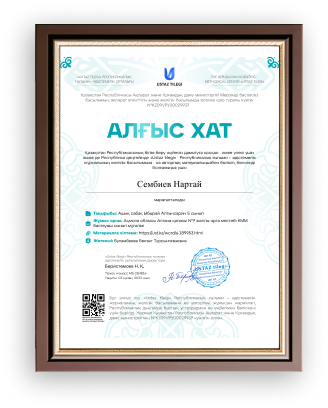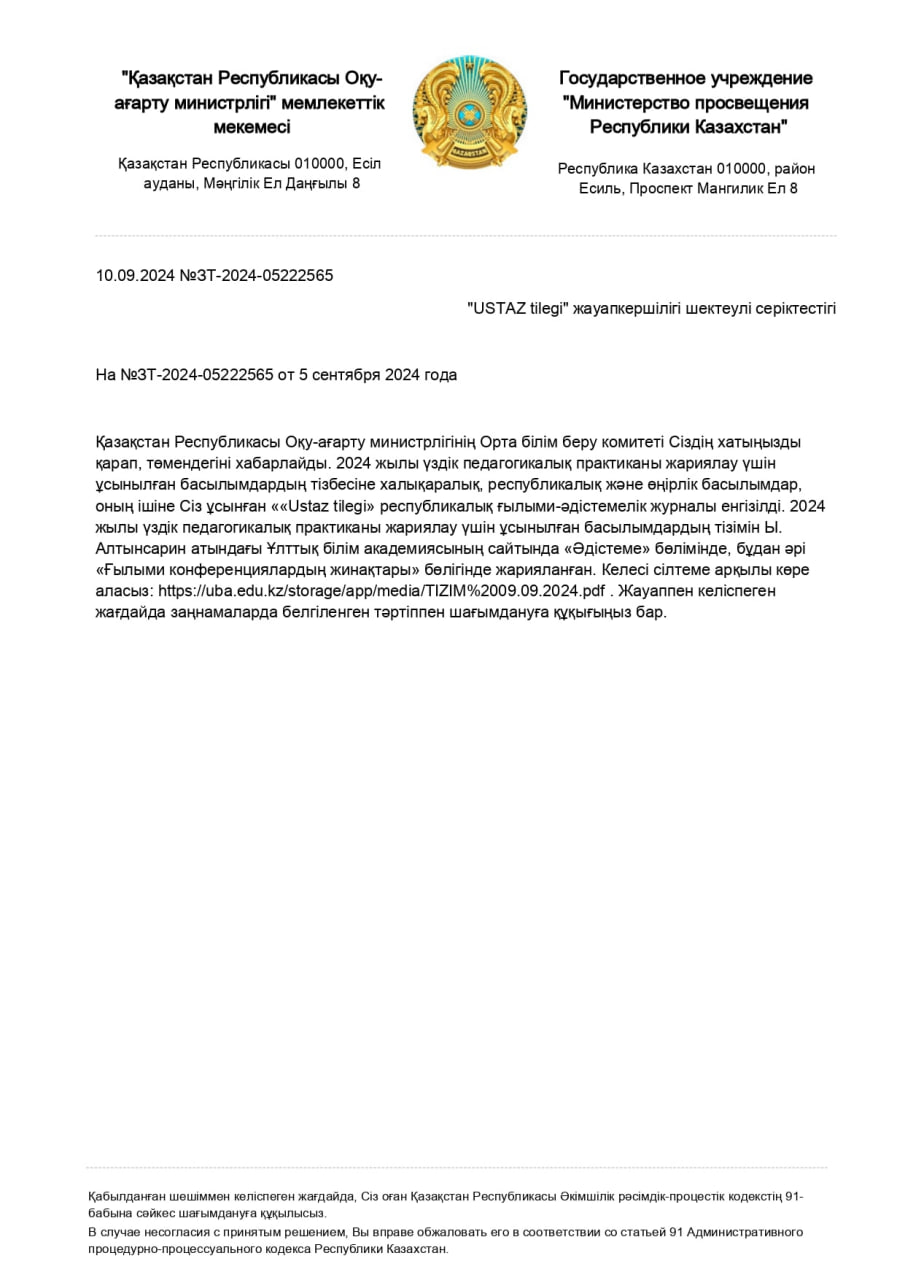TEACHING
ENGLISH WITHIN THE FRAMEWORK OF MODERN
PEDAGOGY
Modern pedagogy has undergone significant
changes in recent decades, especially in the area of foreign
language teaching. In today’s interconnected and rapidly evolving
world, English has emerged not only as a useful skill but as a
global necessity. The ability to communicate in English opens doors
to education, career opportunities, and cultural exchange. As such,
the methods used to teach English must align with contemporary
pedagogical principles: being learner-centered, inclusive, dynamic,
and technologically
enriched.
Today, the role of the teacher has
transformed dramatically. No longer seen as the sole source of
knowledge, the teacher is now a facilitator, guide, and mentor. In
English language education, this shift is especially relevant.
Where language instruction once focused heavily on grammar rules,
rote memorization, and repetitive exercises, modern teaching
emphasizes meaningful communication. The communicative approach —
one of the core components of modern pedagogy — treats language as
a practical tool for real-life interaction rather than a rigid
system of rules to be
memorized.
Technology plays a central role in this
transformation. From interactive whiteboards and learning
management systems to mobile applications and virtual reality,
technological tools enhance English lessons and bring them to life.
Students can watch English-language videos, listen to authentic
podcasts, play educational games, or participate in international
video calls with peers from around the world. This exposure helps
them acquire real-life language skills and boosts motivation.
Digital platforms like Duolingo, Quizlet, and Kahoot also provide
opportunities for personalized learning and
self-assessment.
An essential aspect of modern pedagogy is its
emphasis on individual learning styles and differentiated
instruction. Students vary widely in how they process and retain
information. Some learn best through visuals, others through
movement or music. In the English classroom, a teacher might use
songs to teach grammar, role-plays to practice speaking, or comics
to explain vocabulary. Adapting tasks to suit different learners
fosters inclusion and builds student
confidence.
Equally important is the psychological
environment of the classroom. Many learners experience anxiety when
speaking in a foreign language, fearing embarrassment or mistakes.
Modern educators aim to create a supportive, judgment-free
atmosphere where errors are seen as natural steps in the learning
process. By encouraging risk-taking and fostering a sense of
community, teachers can reduce language barriers that are emotional
rather than
cognitive.
Another progressive method in modern English
teaching is CLIL — Content and Language Integrated Learning. With
this approach, subjects such as history, geography, or science are
taught in English. This dual-focus method helps students acquire
both language skills and subject knowledge simultaneously. For
instance, by studying climate change in English, students learn
scientific vocabulary in a meaningful context while also developing
analytical thinking.
Gamification has also become increasingly
popular. Incorporating game elements into lessons — such as points,
levels, badges, or quests — can transform traditional activities
into engaging experiences. Whether it’s vocabulary bingo, escape
rooms, or storytelling challenges, games increase student
participation, especially among young learners. Adults also respond
well to gamification when it is purposeful and
well-structured.
Assessment methods have evolved too. Instead
of relying solely on tests and written exams, teachers now use
varied forms of formative assessment: student portfolios, peer
reviews, presentations, group projects, and self-reflection tasks.
This allows for a more comprehensive evaluation of students’
communicative competence and 21st-century skills, such as
collaboration and
creativity.
Inclusive education is another cornerstone of
modern pedagogy. Teachers must ensure that all students —
regardless of ability, background, or first language — feel valued
and supported. In diverse classrooms, teachers might use visual
aids, simplified instructions, or bilingual resources to help
everyone engage with the material. Educators are also trained to
support students with special educational needs through
differentiated strategies and flexible
pacing.
Project-based learning (PBL) is a powerful
tool in modern classrooms. Instead of isolated drills, students
undertake long-term tasks that involve research, teamwork, and
real-world application. For example, students might design a travel
brochure for an English-speaking country or produce a short film on
environmental issues. Such projects encourage autonomy and help
students use English purposefully, not just
academically.
Collaborative learning further enhances
language development. Working in pairs or small groups helps
students negotiate meaning, practice dialogue, and develop social
skills. Activities such as interviews, debates, and group
storytelling improve fluency and build confidence. Moreover,
students learn to respect different opinions and collaborate
towards common goals — a vital life
skill.
Modern pedagogy also incorporates findings
from psychology and neuroscience. Concepts like cognitive load,
motivation theory, and growth mindset influence how teachers plan
and deliver lessons. Educators now understand that stress and fear
hinder learning, while positive reinforcement, goal setting, and
emotional connection enhance memory and retention. Thus, lessons
are structured to be challenging but achievable, varied yet
focused, and emotionally
safe.
Translanguaging is another innovative concept
gaining popularity. In multilingual classrooms, students are
encouraged to use all their linguistic resources to aid
comprehension and expression. For instance, a student might
brainstorm in their first language before writing in English. This
approach affirms cultural identity and facilitates deeper cognitive
processing, rather than forcing learners to abandon their native
tongues.
Global competence is also integrated into
English education. Through discussions on international issues,
exploration of world cultures, and analysis of authentic materials
such as films and news, students develop critical thinking and
intercultural understanding. English thus becomes a tool for global
citizenship, helping learners connect beyond
borders.
In areas with limited resources, teachers
find creative ways to implement modern methods. They may use
recycled materials, draw on local stories, or invite community
members into the classroom. Training programs now emphasize
adaptability and resourcefulness, ensuring quality education even
in underfunded
settings.
Digital literacy is increasingly vital.
Students are taught to navigate online platforms, evaluate sources,
and communicate ethically in digital spaces. Assignments may
include blogging, podcasting, or creating digital portfolios — all
of which build language skills while preparing students for the
modern world.
Finally, modern pedagogy promotes lifelong
learning for both students and teachers. English is a living,
evolving language, and educators must stay updated with new
techniques, tools, and trends. Professional development — through
workshops, online courses, teacher networks, and reflective
practice — ensures that teaching remains fresh, relevant, and
responsive to learners’
needs.
In conclusion, teaching English within the
framework of modern pedagogy is a dynamic, holistic, and
learner-driven process. It combines technology, inclusivity,
creativity, and emotional intelligence. By embracing these
principles, teachers empower students not just to pass exams, but
to connect, contribute, and thrive in a complex global society.
Ultimately, English lessons become more than just language
instruction — they become journeys of growth, discovery, and
transformation.
REFERENCES
-
Richards, J. C., & Rodgers, T. S. (2014).
Approaches and Methods in Language Teaching (3rd ed.). Cambridge
University Press.
-
Harmer, J. (2015). The Practice of English
Language Teaching (5th ed.). Pearson Education Limited.
-
Lightbown, P. M., & Spada, N. (2013). How
Languages Are Learned (4th ed.). Oxford University
Press.
-
Brown, H. D. (2007). Principles of Language
Learning and Teaching (5th ed.). Pearson Longman.
-
Coyle, D., Hood, P., & Marsh, D. (2010). CLIL:
Content and Language Integrated Learning. Cambridge University
Press.
-
Dudeney, G., Hockly, N., & Pegrum, M. (2013).
Digital Literacies: Concepts, Policies and Practices.
Routledge.
-
Tomlinson, B. (Ed.). (2011). Materials Development in
Language Teaching (2nd ed.). Cambridge University Press.

















